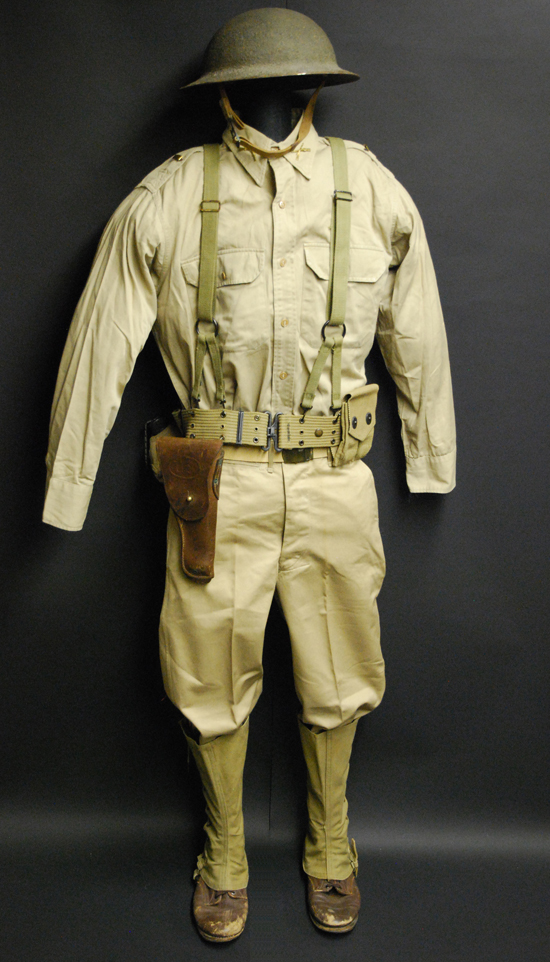It wasn’t just the Europeans or the Japanese who utilized khaki, as so too did the American military, which first adopted khaki during the Spanish America War in 1898. Until that time the United States Army was outfitted with the M1883 fatigue blouse in blue. However, the large numbers of volunteers – as well as the fact that soldiers were falling prey to heat exhaustion and dehydration – forced the army to experiment with lighter-colored and lighter-weight materials. The United States thus adopted the “khaki cotton drill” and in 1903 the army authorized these as the official hot weather fatigue and field dress.

An American M1895 pattern tunic, one of several patterns used during the Spanish-American War. This example features yellow shoulder boards that indicates cavalry (author’s collection)
The American use of khaki continued following the First World War in tropical climates notably for the United States Navy and United States Marine Corps. The United States Army also utilized a khaki field uniform – the “chino” style – until the outset of World War II as the summer service and field dress. It was replaced by specialized combat uniforms, and only briefly saw use with U.S. Army units in the Pacific. However, the khaki did have its influence on the M41 field jacket, which retained a “khaki” shade, which was finally replaced with the Olive Drab colored M43 field jacket.

At the outbreak of the Second World War the United States had adopted a light summer uniform, often called the “Chino” style. This 1941 pattern uniform was used at Pearl Harbor, Guam and the Philippines and saw limited use as late as the Battle of Midway in 1942 (author’s collection)
The United States Marine Corps. retained khaki as training and walking out uniform, while khaki remains in use with the United States Navy for chief petty officers and officers, who are often known as “khakis” for their uniforms by the enlisted men.
While no longer practical as camouflage, the uniforms still have their place not only with the U.S. Navy, and with other nations as a walking out uniform, but also are part of a shared history of military uniforms – for few patterns or colors have been as widespread as this one of the color of Indian “dust.”
This concludes our series on The Original Camouflage, at least for this time.





Most practical and professional looking uniform ever. Still used in the U.S. Merchant Marine as well, normally by deck officers (normally just a khaki shirt without any insignia.)